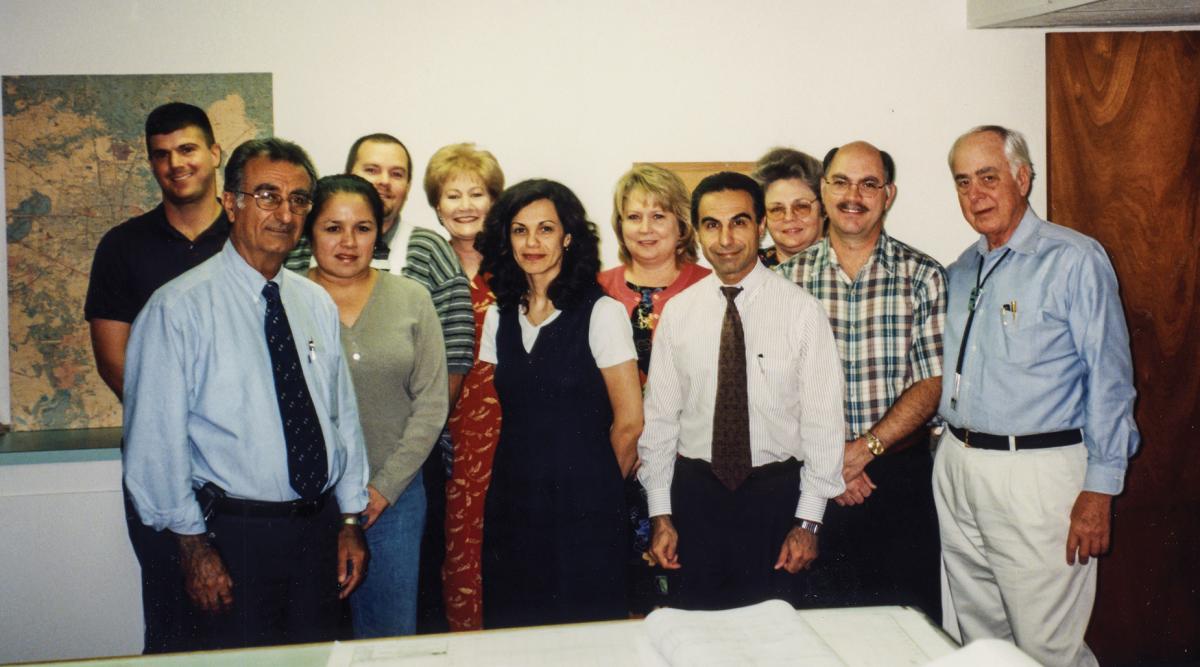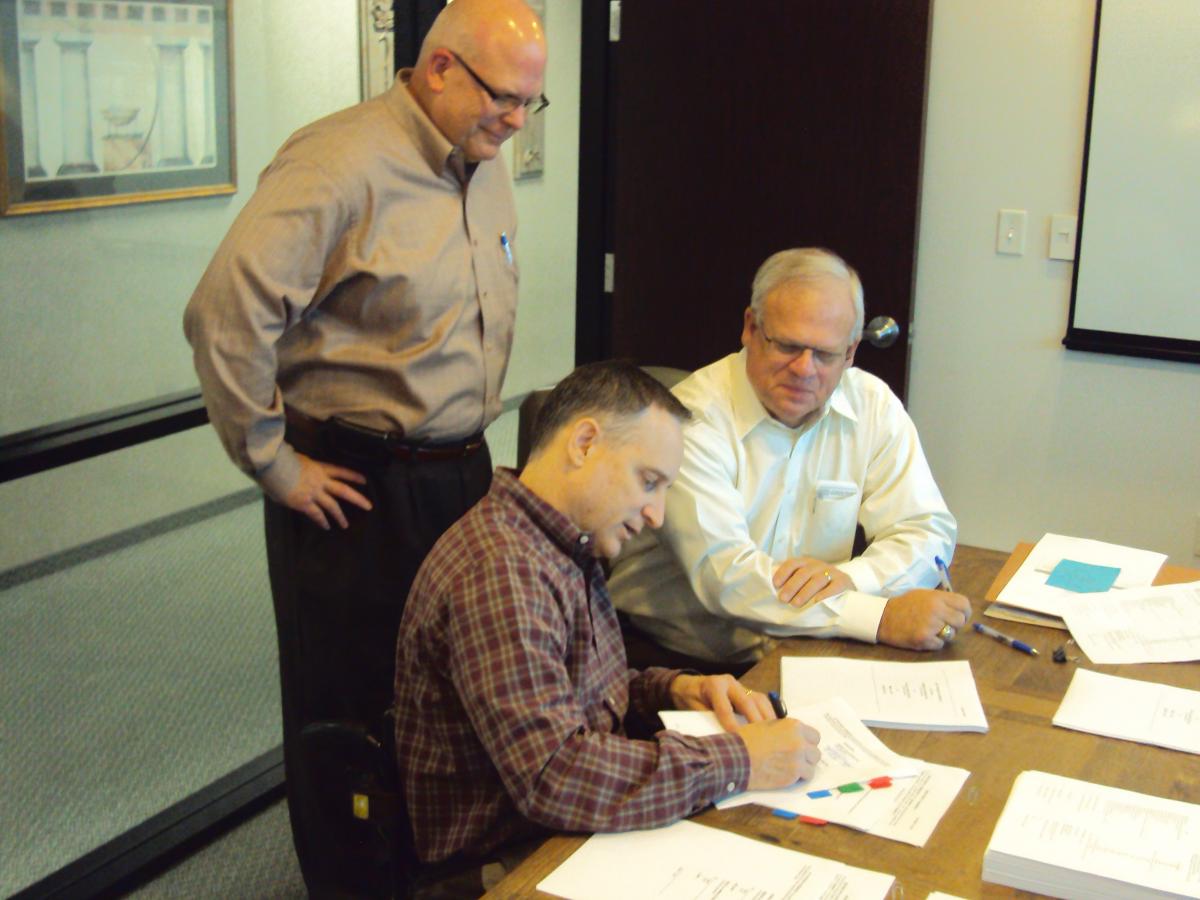The 2000s: New Regions, New Services

![]()
As we celebrate Freese and Nichols’ 125th anniversary, this series will chronicle company achievements decade by decade. Read more in Continuing the Journey, our history book covering 1995 to 2015.
With a renewed emphasis on client service, Freese and Nichols worked to strengthen relationships in the 2000s by establishing 10 offices closer to clients. This expanded presence enabled the firm to provide faster responses, expanded capabilities, and local management of those capabilities.
“Almost all clients prefer to be served by someone nearby,” said Mike Nichols, who was Chief Marketing Officer at the time. “It’s important that decisions can be made locally, by people who are familiar with the client, their needs, their political situation, their personalities. They appreciate having direct access to a decision maker, and our service is better.”
Some of those new offices were in areas where Freese and Nichols had already been active for decades, such as San Antonio (2003) and Corpus Christi (2007). The new century also saw Freese and Nichols return to the Southeast Texas market.
Returning to Southeast Texas
From 1946 to 1959, Freese and Nichols had a partner firm in Houston known as Freese, Nichols and Turner. After the partners separated, they agreed not to compete: The Houston firm, which eventually took the name Turner Collie & Braden, would not pursue work in North Texas, and Freese and Nichols would not pursue work in Southeast Texas. Several decades passed under this unofficial arrangement.

By the late 1990s, the landscape had changed, and Turner Collie & Braden had been acquired by a national firm. Freese and Nichols leaders began researching firms that could expand its local capabilities in Southeast Texas, and Walsh Engineering caught their attention. The 12-person firm in Pearland, south of Houston, had a strong reputation built on 49 years of service to municipalities, the Texas Department of Transportation and industrial clients.
Freese and Nichols acquired Walsh in spring 2000. Over the next few years, as the team steadily grew its work in Pearland and other midsize cities, more opportunities with the City of Houston and Harris County became apparent. To position itself to serve those clients, the firm opened an office in Houston in spring 2004; in 2008, Jeff Taylor came on board as Southeast Division Manager. Taylor, previously Deputy Director of the City of Houston’s Public Utilities Division, had been instrumental in water resources policy development in Texas on municipal and statewide levels.
Taylor expanded the staff in both Houston and Pearland, bringing in a number of experienced professionals from inside and outside of Freese and Nichols. Today, the Southeast Division has more than 110 employees performing services in all of Freese and Nichols’ business lines.
“I always knew that Freese and Nichols was strong in water,” Taylor said. “I didn’t realize how strong we were until I got to the firm. The internal processes that we’ve built – from sales to project execution to client service – absolutely distinguish us from the lion’s share of our competitors.”
Strengthening Services in Urban Planning
In the early 2000s, Freese and Nichols’ urban planning services were within the Architecture Group, led by Alfred Vidaurri. He identified that although the firm was seen as a leader in higher education planning, it had a weak position in municipal planning. So, the architects and planners began pursuing ways to grow Freese and Nichols’ expertise in this area. At the same time, the Texas Legislature was considering allowing design-build public works projects. With this alternative project delivery method, a client hires the same firm to both design and construct a project, which could weaken Freese and Nichols’ core business, design.
“Most projects in our business have three phases: planning, design and construction,” said Ron Lemons, then Chief Operating Officer. “We felt that because of alternative project delivery methods, we may not be able to hang onto design phase work, but there would still be a need for the planning phase and the construction phase. We already had a well-regarded Construction Services Group, probably the best in the state. We had good expertise in water resources planning and utilities planning, but not city planning. So we decided to shore up our planning side.”
Freese and Nichols did so by acquiring Dunkin Sefko & Associates in 2007. The Dallas-based urban planning consulting firm had been in business since 1973, had served more than 60 municipalities across Texas and already had a successful working relationship with Freese and Nichols. Its services included municipal, economic development and land use plans; fiscal impact modeling; capital improvement programming; and demographic studies. With this acquisition, Freese and Nichols’ planning capabilities quickly expanded.
Meanwhile, the Legislature ultimately decided to allow design-build in phases; limits on how many design-build projects that a municipality may initiate each year are based on population.
“One end result for us was that we got into design-build,” said Bob Pence, at the time the President and CEO. “We developed our alternative delivery capabilities to a much greater level. The other result was that we developed a strength of planning in all our areas, and now we’re much stronger planning-wise.”
Expanding into Energy
In 2006, Chesapeake Energy, the largest independent gas producer in the United States, was preparing to extract natural gas at Dallas/Fort Worth International Airport using hydraulic fracturing and horizontal drilling. The company retained Freese and Nichols to provide engineering support for development of 270 gas wells. The team designed gas-gathering pipelines, freshwater pipelines and the gas compressor station, as well as overseeing permitting, construction, materials handling and project coordination.

As the relationship with Chesapeake advanced, Chesapeake involved Freese and Nichols in development of more than $1 billion in gas-gathering infrastructure in the Barnett Shale, the gas-rich sedimentary rock formation beneath much of North Texas. The Barnett program served as a model for other Chesapeake divisions throughout the United States. In 2007, Chesapeake hired Freese and Nichols to help organize its staff of several hundred to execute more than 300 separate pipeline and compression facilities projects.
“The Chesapeake project was a game-changer for us,” Lemons said. “Over a period of time, Chesapeake started hiring us as program managers to start coordinating all these other consultants, even internal work efforts, and we got more and more into program management because of that. We realized there was a niche for us, and we needed somebody that had oil and gas pipeline experience to really take full advantage of this.”
The services to Chesapeake and other energy companies introduced Freese and Nichols to Nicol & Associates in Richardson, Texas. The 23-person firm had built a strong reputation for reliable service in the midstream energy industry, which involves transportation and storage of oil and gas and other stages between the well and refinery. In 2011, Freese and Nichols acquired the firm and quickly working almost exclusively in oil and gas engineering.

